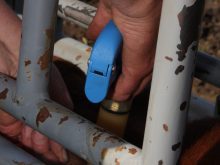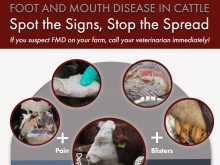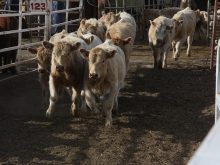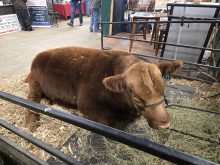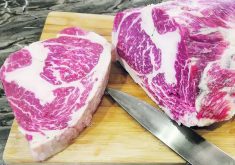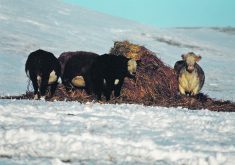A study from the University of Saskatchewan finds that lower heat unit corn could displace some barley in feed rations
Glacier FarmMedia – A University of Saskatchewan study has found encouraging results from feeding high moisture corn to finishing cattle.
It also identified corn “snaplage” as a potential fill-in for barley grain and silage diets.
The project saw researchers replace a portion of barley with high moisture corn (HMC) in finishing diets. The latter revealed excellent rumenal starch digestibility, said project supervisor Greg Penner.
Read Also

Animal protection delivery to change in Saskatchewan
The Saskatchewan government is looking for a new agency to handle animal welfare after Animal Protection Services of Saskatchewan decided not to renew its contract next year.
“We had about 80 to 85 per cent of that starch being digested in the rumen. And that’s really what we’re targeting: trying to promote that rumen fermentation for our finishing cattle.”
This digestive efficiency was backed by animal performance as well as fecal starches, which were below three per cent.
“So if HMC is economical to grow, it could be a very good option as part of the cereal grains for finishing cattle. In fact, we had faster rates of gain and heavier carcass weight without reductions in feed efficiency, so it shows that it could be a very good starch source,” said Penner.
What are HMC and snaplage ? Typically, HMC is harvested before reaching the 70 per cent dry matter or 30 per cent moisture benchmarks for dry corn storage. It’s then processed using a hammer mill or tub grinder and packed like silage, fermented and stored for feeding, said Penner.
“So it’s really like dealing with just the corn grain part of the corn silage,” said Penner.
Snaplage is a little different.
“You need a snapper header. And essentially what you do with snaplage is you pull the ear of the corn off so you get part of the shank, you get the whole cob and the corn grain as well as the husk,” he said.
“And then that component is treated very much like silage so it’s chopped, it’s packed and ensiled … It’s really a blend of fibre and that high quality corn.”
Because it’s both a grain and a forage, snaplage replaced all barley silage and some barley grain in the research test. Researchers found promising results with no differences in cattle growth or feed efficiency compared to barley grain.
From a cost perspective, snaplage was less expensive than traditional barley and short-season HMC.
According to a Beef Cattle Research Council summary, corn residue (also known as stover) in drought years may be less expensive to feed than barley greenfeed. However, extra supplementation will be needed to ensure cattle productivity is not compromised.
There was only one identifiable risk when it came to snaplage.
“If we have really high quality snaplage, I think there is a risk for some rumen acidosis because of a little lower fibre level,” said Penner. Good quality snaplage has more starch and less fibre.
As lower heat unit corn varieties gain popularity in Canada, cattle producers wonder how to embrace the power of corn in cattle-feeding rations. At the same time, farmers muse on the value of growing it.
“So if they do continue to drop the heat units required to have mature corn, there’s a greater capacity for producers in Western Canada to achieve corn grain-type production scenarios,” said Penner.
“With this project, we were looking into the future, anticipating that companies will continue to develop more regionally suitable corn varieties. We wanted to get ahead of that to provide some data for producers to show how feeding high moisture corn or snaplage fits in a barley-dominated feeding scenario.”
HMC and snaplage are best grown in regions with high heat exposure and irrigation, such as southern Alberta, much of southern Manitoba and a small pocket near the west-central Saskatchewan town of Outlook, where irrigation is also available.
Beyond those locations, growing these corn products can be a gamble. Although corn is more feasible on the Prairies than it used to be, Penner said there’s still risk.
“When we’re talking about high moisture corn or snaplage, we’re really expecting that corn plant to get quite advanced in maturity,” he said. “The problem we tend to have is that killing frost comes before real advanced maturity and so that comes at a pretty sharp cost in terms of our yields.”
Another portion of the study compared grazing snaplage or HMC residues to grazing on whole barley swaths. Unfortunately there was substantial residue loss to wind and wildlife.
“And so, while you might anticipate a higher yield, there’s a number of situations where we can actually have losses of nutrients before we’re able to harvest it or feed it to the cattle,” said Penner.
Although baling HMC and snaplage residue reduced field loss, it also caused the bales to heat and attract mould. Also, the cattle eating these bales required more protein and energy supplements than those fed barley greenfeed bales. They had lower feed intake, lower final body weight and lower body condition scores than those consuming barley greenfeed.
BCRC summarized the project.
“Feeding high moisture corn residue is not without challenge in Western Canada, given the risk for field loss and challenges with preservation when baled. However, provided cows receive sufficient protein and energy supplementation, corn residue may be a cost-effective alternative to whole-plant barley.”
In addition to BCRC, the project was funded by the Saskatchewan Ministry of Agriculture, the Saskatchewan Cattlemen’s Association and the Canadian Beef Cattle Check-Off.




